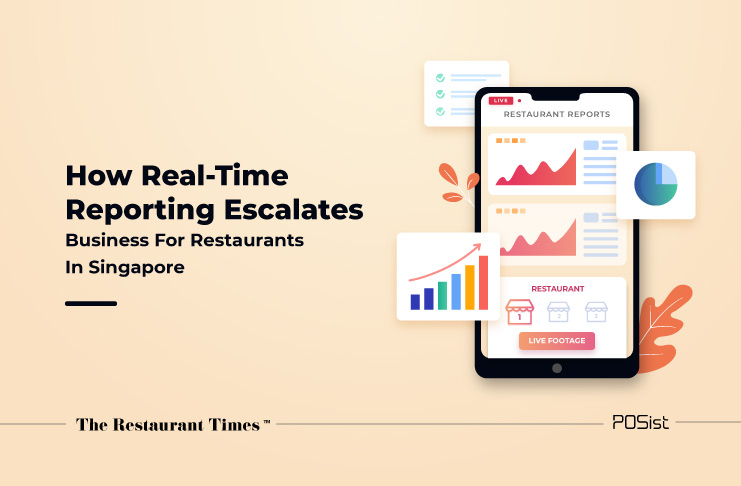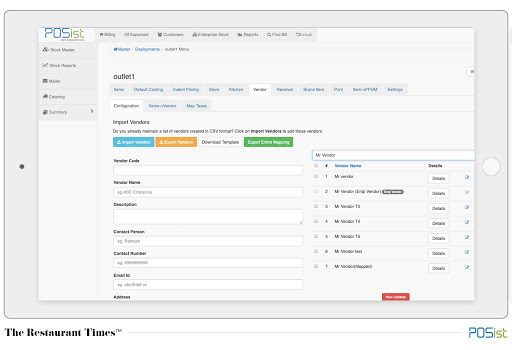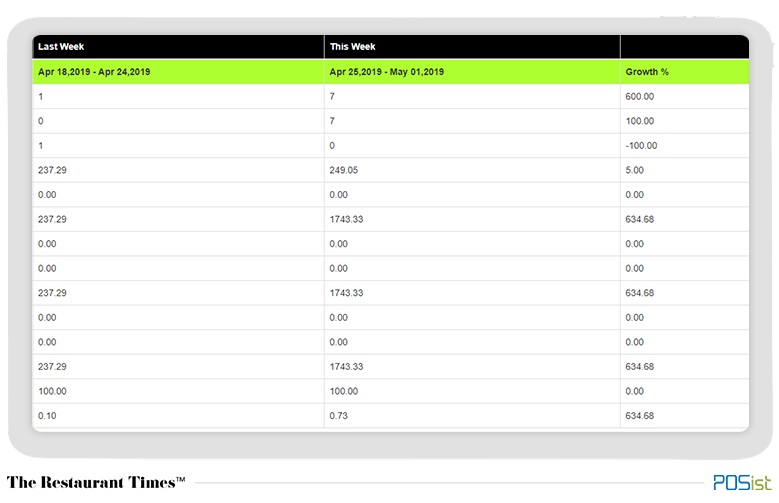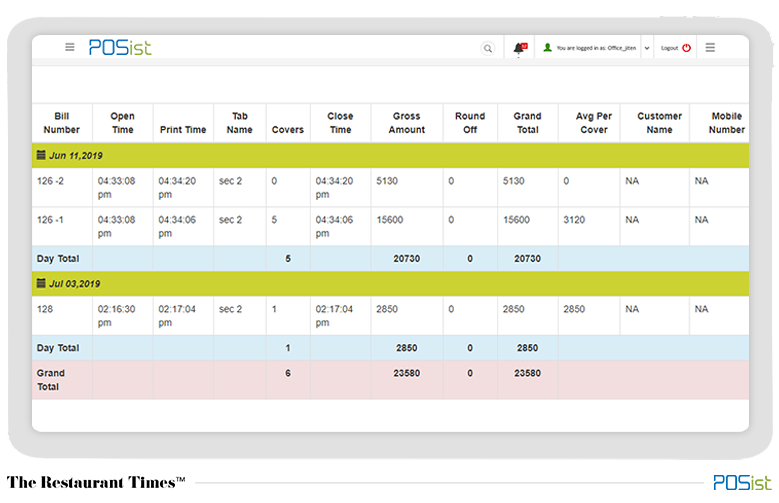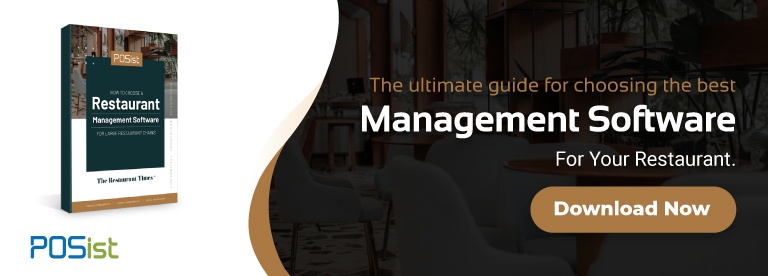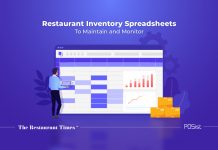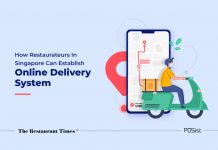Innovation and technology runs in the DNA of Singapore’s national identity. Interestingly, according to the latest Global Innovation Index, Singapore is ranked as the most innovative country in Asia. More than one-third of the F&B outlets in the country are using at least one technology solution to work more productively. With that happening, Singapore restaurant industry is growing faster than expected, with an annual growth rate of 6.6% (source: Statista). It was estimated that by 2020, more than half the F&B outlets, including hawkers, tea stalls and the unorganized sector would adopt digital solutions. Considering the amount of competition that the restaurants must be facing, the need to bring in real-time reporting and analytics as a feature of your restaurant technology partner increases multiple folds. Especially for the growth of a restaurant chain, you need a platform to constantly monitor operations across all outlets.
As a restaurateur, you must realize that one mistake can cost you a loyal customer. Since customers now have dozens of options to eat out, you need to be extra careful about retaining them. Along with ensuring the quality of your food, you need to be able to constantly monitor what’s going on at each of your outlets.
Let’s dig in to understand how you can use real-time reporting and analytics to scale your business.
How To Use Real-time Reporting To Grow Your Restaurant Business in Singapore
Managing large restaurant chains is a pretty competitive game in any part of the world. However, Singapore restaurant industry is one of the toughest nuts to crack. The last few years have seen tremendous growth in terms of professional opportunities and incomes of its people. This gives massive scope for restaurateurs to grow here.
Growing a restaurant chain needs a proper expansion strategy and perpetually retaining customers. One thing to be noted about the market of Singapore is that it’s an amalgam of various cultures, so people are most willing to try new technologies, new recipes and what not. This is why many innovative technologies have been introduced in Singapore restaurant industry. Restaurant owners have also readily invested in POS systems to help them track their respective businesses at all times of the day.
The need for real-time reporting and analysis arises when you can’t be at a particular location yourself at all times of the day. Since running a restaurant chain requires you to be pro-active 24*7, you need to bring in real-time reporting to analyze your data better.
Here is a list of features that you could use!
1. Outlet Management
The primary issue in managing a large restaurant chain is placing orders quickly and efficiently. Managing orders along with other operations for a standalone restaurant is itself a task. Now, think about the magnitude of expertise required for achieving the same across multiple outlets. You definitely need a POS!
Coordinating the working of each outlet becomes essential when it comes to managing a restaurant chain. Everything from order taking to sales reports, marketing offers and so on, needs to be constantly monitored. This is why restaurateurs prefer having a platform that provides them with real-time reports of each of their outlets.
Here are a few positive changes that your real-time reporting can bring at your restaurant:
- You can manage orders that receive at each outlet, centrally.
- Since all the operations from kitchen to delivery are streamlined, you can add another outlet to your POS in a few clicks.
- You can always monitor the item-wise performance of each outlet and figure out your recipe strategy for the season ahead.
- In case you’re thinking of adopting the franchise model, you can do it pretty easily through your software. It takes care of all your legal agreements, financial agreements, SOP’s, and basic processes!
2. Theft And Underperforming Staff
Restaurant thefts and pilferage are one of the major reasons why restaurants fail to grow. At an enterprise level, thefts can disrupt your operations and revenue strategy. Having access to your staff’s performance data, the kind of gifts and discounts that the staff is offering and information related to your staff’s time sheets helps you make many operational level decisions.
Live analytics helps identify any lags in restaurant processes, at the exact moment when it happened. This way, the restaurant owner does not have to wait for a month or a quarter to get reports, and then analyze what went wrong.
3. Analytics And Growth
As mentioned earlier, real-time reporting reduces the probability of your business losing money by providing you with consistent analysis. With such extensive reporting, you have access to today’s performance reports and reports from a week ago. All of this makes it extremely easy to predict growth over a certain period of time.
4. Forecasting Trends
Understanding customer behavior on a daily or weekly basis helps you compare actual performance against the goal. Your growth is subject to what customers think about you, which is why you need to be one step ahead, and forecast trends according to their consumption pattern and overall market conditions.
Use your real-time reports to identify what customers prefer to order, and what items are being ignored, and then introduce some changes in the menu or recipe of a particular dish. Being responsive to emerging trends helps you engage your customers and make them feel valued.
5. Feedback Management
Another major operational area that you can easily tackle with the help of live reporting is consistent feedback. By incorporating a personalized feedback form, real-time reporting can help you analyze what exactly went wrong at which outlet, and with which customer. Instead of waiting for the entire month’s report, and facing the repercussions of a negative review on social media, you can address complaints proactively through real time analytics.
6. Scaling To Other Markets
Since location plays a key role in your business growth, you need to be able to analyze which locations might work for your brand and which ones will not. Use the data at your disposal to make realistic decisions on how to expand to new markets. If you realize that a particular outlet doesn’t work as much as others do, you can look for alternatives in terms of the location/market you want to target next.
Ask yourself questions on why a particular outlet is lagging behind in terms of performance. Is it the audience, the marketing offers, the location or something else? You can analyze the same using different types of data, and make objective, evidence based decisions to scale your business.
7. Outlet Level Marketing
Different outlets work differently due to their locations, the different discounts and offers running, and many other factors. Real-time reporting of sales trends at different outlets help you to optimize your marketing strategy. For instance, if a particular offer doesn’t work for one outlet, you can instantly modify it to perform better.
All in all, it might be a great time to adopt an integrated real-time reporting and analytics tool such as POS in Singapore. With the major benefits that real-time reporting offers a restaurant chain, you would be making a wise investment for the future! For more information, please feel free to contact us!


